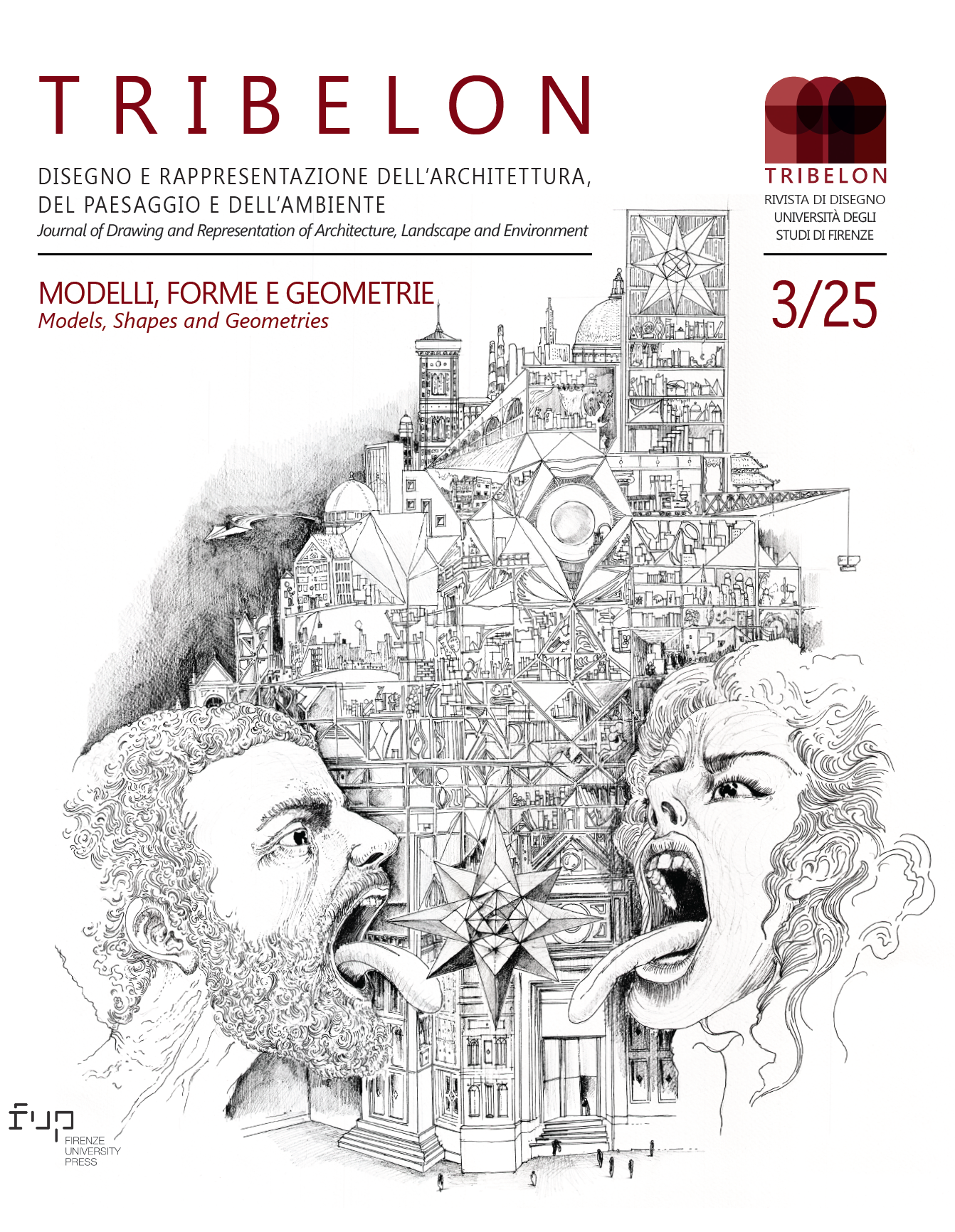Published 2025-06-09
How to Cite
Copyright (c) 2025 Roberta Barsanti, Giovanni Pancani

This work is licensed under a Creative Commons Attribution 4.0 International License.
Abstract
This contribution presents the first results of a research project on the “Dragon of Vinci,” a charcoal wall drawing decorating a late medieval fireplace in a municipal building near the Castle of the Counts Guidi. In a fragile state of preservation due to water infiltration and overlapping lime washes, the work has been documented using non-invasive techniques, including laser scanning, photogrammetry, and thermography, which revealed otherwise illegible details. The metamorphic and complex creature recalls figurative models of Florentine art in the late fifteenth century and shows affinities with Leonardo da Vinci’s youthful drawings of dragons and fantastic animals. The link with the artist’s birthplace and the outcomes of diagnostic investigations raises the possibility of attributing the work to Leonardo - an attribution that, if confirmed, would add a rare mural drawing to his corpus. The study aims to initiate a systematic process of research and enhancement of this fragile yet extraordinary work.
References
- C. Altomare, Il ruolo delle indagini non invasive nella diagnostica: procedure integrate per la tutela e la valutazione della vulnerabilità del patrimonio architettonico, Pellegrini, Cleto 2019.
- V. Arrighi, Il mulino di Leonardo. Vinci 3 maggio 1478 [scheda], in R. Barsanti (a cura di), Leonardo a Vinci. Alle origini del genio, catalogo della mostra, Giunti, Firenze 2019, pp. 298-300.
- C. C. Bambach, Leonardo da Vinci riscoperto, vol. I, La formazione di un artista: 1452-1500, Yale University Press, New Haven-Londra 2019.
- P. C. Marani, Leonardo. Una carriera di pittore, apparati a cura di P. C. Marani, E. Villata, Motta, Milano 1999.
- F. Bandini, F. Felici, M. R. Lanfranchi, P. I. Mariotti, Lo stato di conservazione e l’intervento di restauro del Monocromo, in M. Palazzo, F. Tasso (a cura di), Leonardo da Vinci. La Sala delle Asse del Castello Sforzesco. La diagnostica e il restauro del Monocromo, Silvana Editoriale, Cinisello Balsamo 2017, pp. 186-199.
- A. De Marchi, Le geometrie luminose di Verrocchio pittore e le loro diffrazioni a Firenze sul 1470: tra Leonardo, Ghirlandaio e Perugino, in F. Caglioti, A. De Marchi (a cura di), Verrocchio. Il maestro di Leonardo. Catalogo della mostra (Firenze, Palazzo Strozzi, con una sezione speciale al Museo Nazionale del Bargello), Marsilio, Venezia 2019, pp. 49-77.


